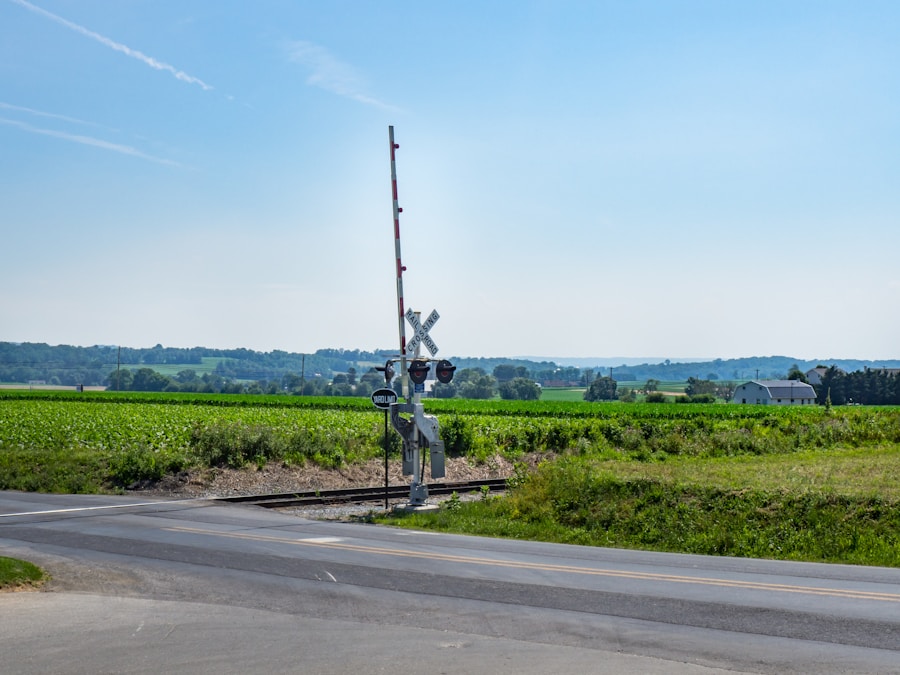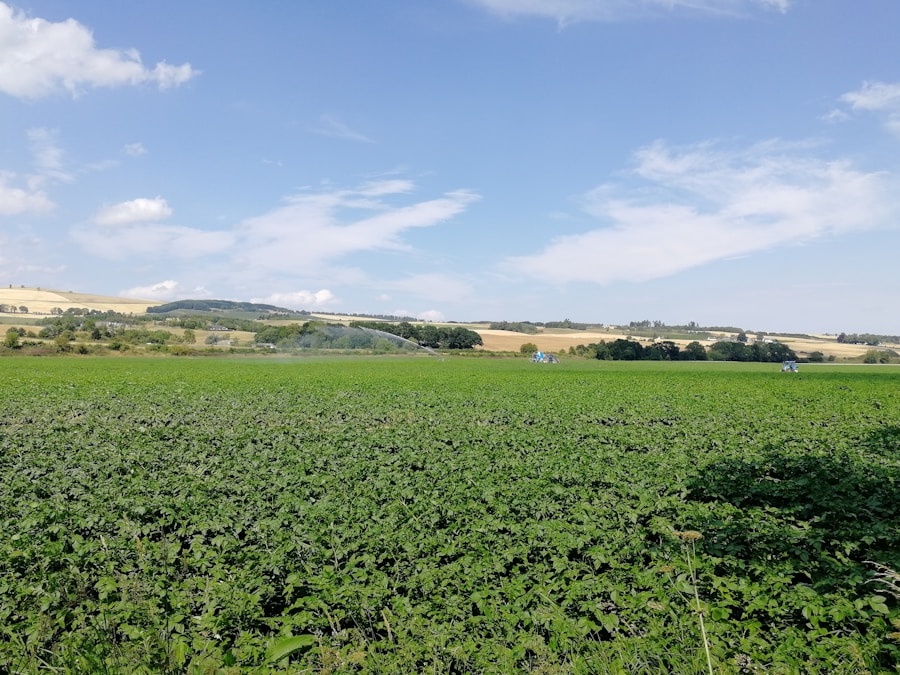Hopfield networks, a class of recurrent artificial neural networks, were introduced by John Hopfield in 1982. These networks are particularly notable for their ability to serve as associative memory systems, which means they can retrieve stored patterns based on partial or noisy inputs. The fundamental principle behind Hopfield networks is their ability to converge to stable states, which correspond to the stored patterns, through a process of energy minimization.
This characteristic makes them a fascinating subject of study within the broader field of artificial intelligence and neural computation. The architecture of Hopfield networks is relatively simple yet powerful. They consist of a set of interconnected neurons, each of which can be in one of two states: active or inactive.
The connections between neurons are symmetric, meaning that the weight from neuron A to neuron B is the same as the weight from neuron B to neuron This symmetry is crucial for the network’s stability and convergence properties. As a result, Hopfield networks can effectively model complex systems and solve problems that require pattern recognition and optimization.
Key Takeaways
- Hopfield networks are a type of recurrent neural network used for pattern recognition and optimization problems in artificial intelligence.
- The architecture of Hopfield networks consists of interconnected neurons with symmetric weights, allowing for stable attractor states.
- Hopfield networks function by updating neuron states based on the input and the network’s current state, converging towards stable patterns.
- Hopfield networks are applied in pattern recognition tasks such as image and speech recognition, as well as in optimization problems like the traveling salesman problem.
- While Hopfield networks have advantages in associative memory and pattern recognition, they also have limitations in scalability and storage capacity.
The Architecture of Hopfield Networks
Weight Initialization and Neuron States
The weights are typically initialized based on the patterns that the network is intended to store. In a Hopfield network, the neurons are binary units, meaning they can take on values of either 1 (active) or -1 (inactive). The state of each neuron is updated based on the weighted sum of its inputs from other neurons.
Update Process and Threshold Function
This update process is governed by a threshold function, which determines whether a neuron should switch its state based on the accumulated input.
Pattern Representation and Recall
The overall architecture allows for the representation of multiple patterns within the same network, enabling it to recall these patterns when presented with partial or distorted versions.
Understanding the Functioning of Hopfield Networks

The functioning of Hopfield networks revolves around the concept of energy minimization. Each configuration of the network can be associated with an energy level, which is defined by a specific mathematical function. The goal of the network is to minimize this energy function, thereby reaching a stable state that corresponds to one of the stored patterns.
The energy function is typically defined as: \[
E = -\frac{1}{2} \sum_{i \neq j} w_{ij} s_i s_j
\] where \(E\) is the energy, \(w_{ij}\) represents the weight between neurons \(i\) and \(j\), and \(s_i\) and \(s_j\) are the states of these neurons. As the network updates its states, it moves towards configurations that lower this energy, ultimately converging to local minima that represent stored patterns. When a Hopfield network is presented with an input pattern, it begins to update its neurons based on the current states and weights.
This process continues iteratively until the network stabilizes, meaning that further updates do not change the states of the neurons. The convergence behavior is influenced by the initial state and the weights assigned to connections, which can lead to different outcomes depending on how well the input pattern aligns with stored patterns.
Applications of Hopfield Networks in Pattern Recognition
| Application | Description |
|---|---|
| Image Recognition | Hopfield networks have been used to recognize and classify images in various fields such as medical imaging, satellite image analysis, and facial recognition. |
| Speech Recognition | Hopfield networks have been applied to speech recognition tasks, where they can be used to identify and interpret spoken words and phrases. |
| Handwriting Recognition | Hopfield networks have been used to recognize and interpret handwritten text, enabling applications such as signature verification and postal address recognition. |
| Biometric Identification | Hopfield networks have been utilized in biometric identification systems for tasks such as fingerprint recognition, iris scanning, and palm print recognition. |
Hopfield networks have found significant applications in pattern recognition tasks due to their ability to recall stored patterns from incomplete or noisy inputs. For instance, in image recognition, a Hopfield network can be trained on various images by encoding them into its weight matrix. When presented with a distorted version of one of these images, the network can effectively retrieve the original image by converging to its stored representation.
One concrete example involves recognizing handwritten digits. A Hopfield network can be trained on a dataset containing various handwritten representations of digits 0 through 9. When a new digit is presented—perhaps one that has been partially obscured or written in a different style—the network can still identify it by recalling the closest matching pattern from its memory.
This capability makes Hopfield networks particularly useful in applications where data may be incomplete or subject to variations. Moreover, Hopfield networks have been employed in more complex scenarios such as facial recognition systems. By training on numerous facial images, these networks can learn to recognize faces even when they are viewed from different angles or under varying lighting conditions.
The associative memory property allows for robust recognition capabilities, making them valuable tools in security systems and user authentication processes.
The Role of Hopfield Networks in Optimization Problems
Beyond pattern recognition, Hopfield networks have also been applied to solve optimization problems. The energy minimization framework inherent in these networks aligns well with many optimization tasks, where the objective is to find a configuration that minimizes or maximizes a certain function. For example, one common application is in solving combinatorial optimization problems such as the traveling salesman problem (TSP).
In TSP, the goal is to find the shortest possible route that visits a set of cities and returns to the origin city. By encoding potential routes as states within a Hopfield network and defining an appropriate energy function that reflects the total distance traveled, the network can explore various configurations and converge towards an optimal or near-optimal solution. This approach leverages the network’s ability to navigate through complex solution spaces efficiently.
Another area where Hopfield networks have shown promise is in scheduling problems. For instance, when scheduling tasks in manufacturing or project management, multiple constraints must be considered, such as resource availability and task dependencies. By representing tasks and their relationships as neurons and connections within a Hopfield network, it becomes possible to find feasible schedules that minimize delays or resource conflicts through energy minimization.
Advantages and Limitations of Hopfield Networks

Hopfield networks offer several advantages that make them appealing for various applications. One significant benefit is their ability to perform associative memory tasks effectively; they can recall complete patterns from partial or noisy inputs with remarkable accuracy. This property is particularly useful in real-world scenarios where data may not always be pristine or complete.
Additionally, their fully connected architecture allows for rich interactions between neurons, enabling complex relationships between stored patterns to be captured. This interconnectedness facilitates robust learning capabilities and enhances their performance in both pattern recognition and optimization tasks. Furthermore, Hopfield networks are relatively straightforward to implement and understand compared to more complex neural architectures like deep learning models.
However, despite these advantages, Hopfield networks also have limitations that must be acknowledged. One major drawback is their tendency to converge to local minima rather than global minima during optimization tasks. This behavior can lead to suboptimal solutions when applied to certain problems, particularly those with complex landscapes.
Additionally, as the number of stored patterns increases relative to the number of neurons, the likelihood of interference between patterns rises, which can degrade performance. Another limitation lies in their scalability; while they work well for small to moderate-sized problems, their performance may diminish as problem size increases due to increased computational complexity and memory requirements. Moreover, training Hopfield networks can be challenging since it often requires careful tuning of weights and biases to ensure effective learning without overfitting.
Recent Developments and Future Perspectives in Hopfield Networks
Recent advancements in neural network research have led to renewed interest in Hopfield networks and their potential applications. Researchers have been exploring hybrid models that combine traditional Hopfield networks with modern deep learning techniques to enhance their capabilities further. For instance, integrating convolutional layers with Hopfield architectures could improve their performance in image-related tasks by leveraging spatial hierarchies present in visual data.
Moreover, there has been significant exploration into using Hopfield networks for more complex data types beyond binary inputs. Researchers are investigating how these networks can be adapted for continuous-valued inputs or multi-class classification problems, expanding their applicability across various domains such as natural language processing and time-series analysis. The future perspectives for Hopfield networks also include their integration into larger systems involving reinforcement learning and generative models.
By combining associative memory capabilities with decision-making processes inherent in reinforcement learning frameworks, it may be possible to create intelligent agents capable of learning from experience while retaining knowledge about past states and actions.
Conclusion and Implications of Hopfield Networks in Artificial Intelligence
Hopfield networks represent a significant milestone in the evolution of artificial intelligence and neural computation. Their unique architecture and functioning principles provide valuable insights into associative memory and optimization techniques that continue to influence contemporary research and applications. As advancements in technology and methodologies continue to unfold, Hopfield networks are likely to play an increasingly important role in solving complex problems across various fields.
The implications of these networks extend beyond theoretical exploration; they offer practical solutions for real-world challenges ranging from image recognition to optimization tasks in logistics and scheduling. As researchers delve deeper into enhancing their capabilities and addressing existing limitations, Hopfield networks may emerge as vital components within hybrid systems that leverage both traditional neural approaches and cutting-edge machine learning techniques. In summary, while Hopfield networks may not dominate every aspect of artificial intelligence today, their foundational principles and ongoing developments ensure they remain relevant in discussions about memory systems and optimization strategies within intelligent systems.






Leave a Reply